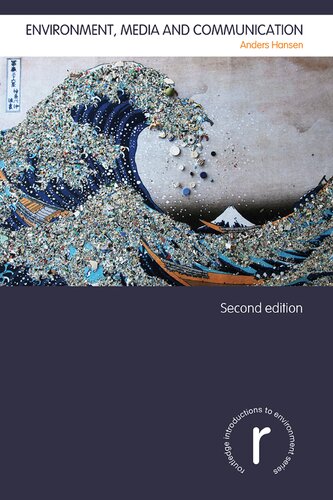

Most ebook files are in PDF format, so you can easily read them using various software such as Foxit Reader or directly on the Google Chrome browser.
Some ebook files are released by publishers in other formats such as .awz, .mobi, .epub, .fb2, etc. You may need to install specific software to read these formats on mobile/PC, such as Calibre.
Please read the tutorial at this link. https://ebooknice.com/page/post?id=faq
We offer FREE conversion to the popular formats you request; however, this may take some time. Therefore, right after payment, please email us, and we will try to provide the service as quickly as possible.
For some exceptional file formats or broken links (if any), please refrain from opening any disputes. Instead, email us first, and we will try to assist within a maximum of 6 hours.
EbookNice Team

Status:
Available0.0
0 reviewsMedia and communication processes are central to how we come to know about and make sense of our environment and to the ways in which environmental concerns are generated, elaborated, manipulated and contested. The second edition of Environment, Media and Communication builds on the first edition’s framework for analysing and understanding media and communication roles in the politics of the environment. It draws on the significant and continuing growth and advances in the field of environmental communication research to show the increasing diversification and complexity of environmental communication. The book highlights the persistent urgency of analysing and understanding how communication about the environment is being influenced and manipulated, with implications for how and indeed whether environmental challenges are being addressed and dealt with.
Since the first edition, changes in media organisations, news media and environmental journalism have continued apace, but – perhaps more significantly – the media technologies and the media and communications landscape have evolved profoundly with the continued rise of digital and social media. Such changes have gone hand in hand with, and often facilitated, enabled and enhanced shifting balances of power in the politics of the environment. There is thus a greater need than ever to analyse and understand the roles of mediated public communication about the environment, and to ask critical questions about who/what benefits and who/what is adversely affected by such processes.
This book will be of interest to students in media/communication studies, geography, environmental studies, political science and sociology as well as to environmental professionals and activists.